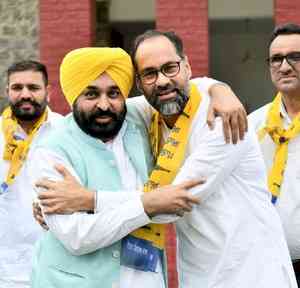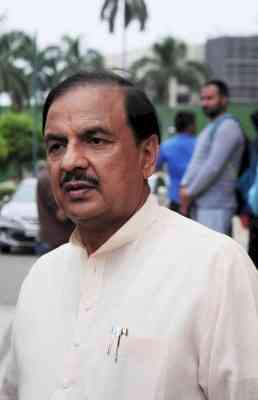OPINION- Pluses and Minuses of National Rural Health Mission in India
Author(s): Harish Monga DidoThe Author. National Rural Health Mission was introduced in the country, to provide the best health services in the rural areas. But showing reluctance on the part of doctors and other para-medical staff,...


The Author.
National Rural Health Mission was introduced in the country, to provide the best health services in the rural areas. But showing reluctance on the part of doctors and other para-medical staff, to be present, on their posting in the village health centers, is a great threat and set back, to the health services.
India, a country of villages, putting a great contribution to the food basket of the country apart from giving sacrificing in the independence movement of India, having great representation in the army and security forces but its residents are being deprived of the facilities like that of cities. In case our villages are not strengthened and made self dependent, the India will definitely die its own death. India is a country of warriors, martyrs, intellectuals and which used to be known as Golden Sparrow, is now becoming the land of poor, illiterate and weak from health point of view and the main reason is due to miserable plight of villagers.
After 66 years of independence of India, if the report is given like that every second child of India is suffering from “Kuposhan” (malnutrition), then it is really matter of shame for us. Now the question arises as to who is responsible for it? - policy makers, planners or those who have to implement the schemes. It is felt that the policies are drafted while sitting in the air-conditioned rooms at the headquarters without making the proper study at the root level and correct data to the policy makers to plan the schemes accordingly.
Our Supreme Court is also not passing the final orders to distribute the foodgrain to the poor instead of allowing it to rotten in the godowns or open plinths due to non-availability of un-scientific storage facilities available in the country. The position is that a good part of foodgrain is declared unfit for human consumption every year. In such circumstances, the mother, who has not been provided the proper diet well before the delivery of the child, one can well imagine the plight and future of the child from under-nourished mother.
According to an estimate, more than 40 per cent children take birth in slum areas in the open and out of the remaining 60 per cent, 22 per cent in government hospitals and 38 per cent in private hospitals or trained nurses. About 50 per cent children take birth with less weight or 60 per cent of mothers are anaemic.
As per the available infrastructure, the health department cannot claim to make available the required standard of services in all the 6,38,526 villages in the country. At present, there are 1,48,124 sub-centers, 23,887 primary health centers and 4,809 community health centers with posting of 2,07,868 ANMs apart from 26,329 allopathic doctors in primary health centers. So far as the specialists, surgeons, physician, gyne doctors are concerned, only 35 per cent of the required strength are available. According to the norm, there is one community health center (CHC) for every 133 villages, one primary health center (PHC) for 27 villages and sub health center (SHC) for 4 villages. One Community Health Centre is required for a population of 80,000 but presently, one such CHC is available for 1,75,000 population. In all these centers, 6,935 specialists and 11798 general duty doctors are in position. But at present, one primary health centre (PHC) is available for about 35,000 people. In fact, under, NRHM scheme, the target was that during seven years time, where the average age of the human-being would be increased, the child mortality rate would also come down, by 2009 all villages will have pure drinking water facility, the child suffering from malnutrition rate would also be reduced, there will be 50 per cent reduction rate in women and child anemia cases and boy-girl ratio will come of 1000:935 in 2011-12 and 1000:950 by 2016-17. But all these fixed targets have not been achieved in any field.
The major problem of the schemes is that the population of the country is rapidly increasing and it is likely to cross China by 2025, and still the clear drinking water facility is not available in 70,000 villages. During these seven years period, the centre government has released Rs.52,832 cries apart from contribution of Rs.45,493 crore by the states.
As per the report submitted by the Working Group constituted by the Planning Commission for 2005-2012 regarding National Rural Heath Mission, there have been very negligible progress in the villages in health services. In Punjab, still out of 100 women, 40 women gives birth to the child at home and what to talk of providing clean drinking water in the villages. The buildings for health services and primary infrastructure required therein have not been made available as per requirement as yet and the shortage of doctors and para-medical staff is a great challenge for the government. Due to contaminated drinking water availability in certain parts of the country, cancer patients are increasing and detection of sugar cases is more worrisome and increase in boy-girl ratio due to female-foeticides is increasing. All these are not the indications for failure of health reforms plans in the country.
The government has to be serious on the availability of infrastructure and availability of doctors and other allied staff in the villages. Since majority of the employees are not interested for posting in the rural areas, some scheme has to be formulated either by giving incentive for option on posting or making it mandatory to do the half of the whole service in rural areas. Only then, there is possibility to make available the best health services in the rural areas where about 80 per cent population of India lives.
(Disclaimer: The views expressed by the author in this article are his own and do not necessarily reflect the views of City Air News.)

 cityairnews
cityairnews 















